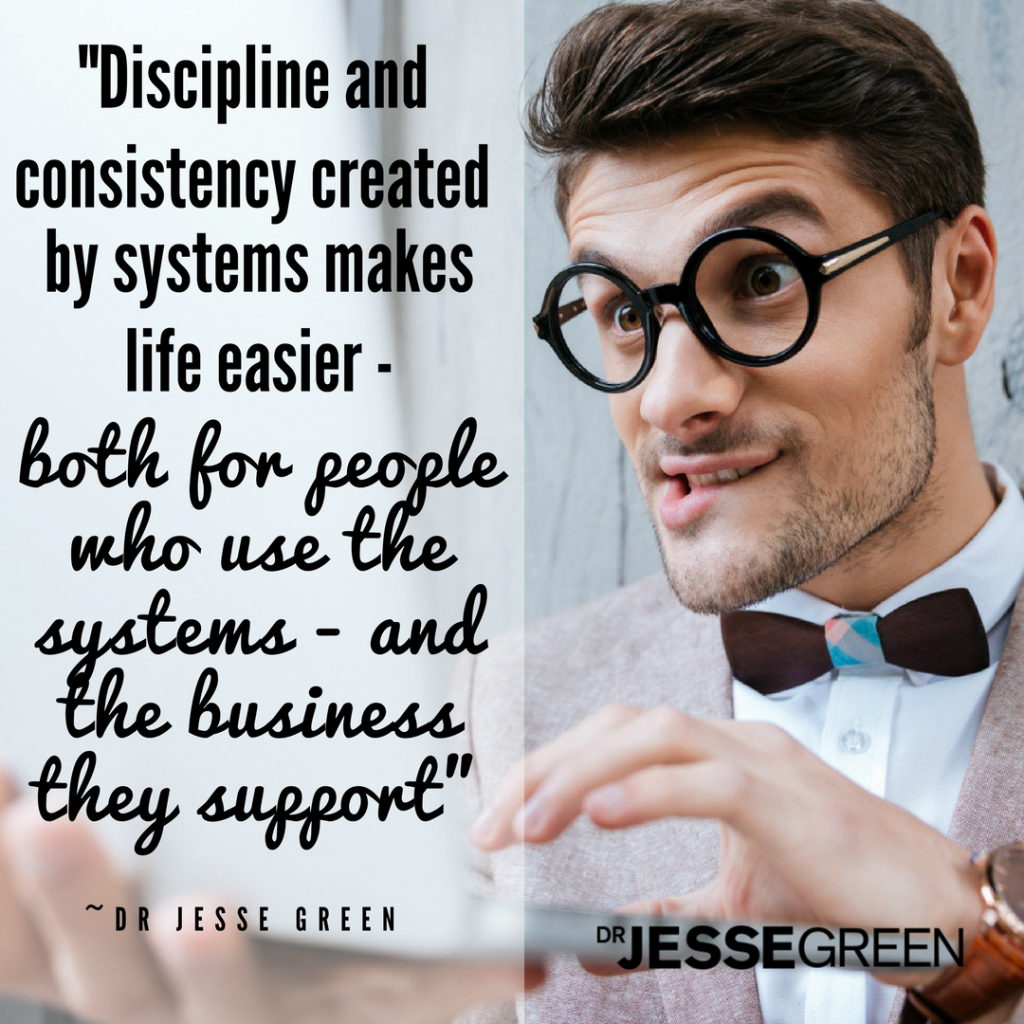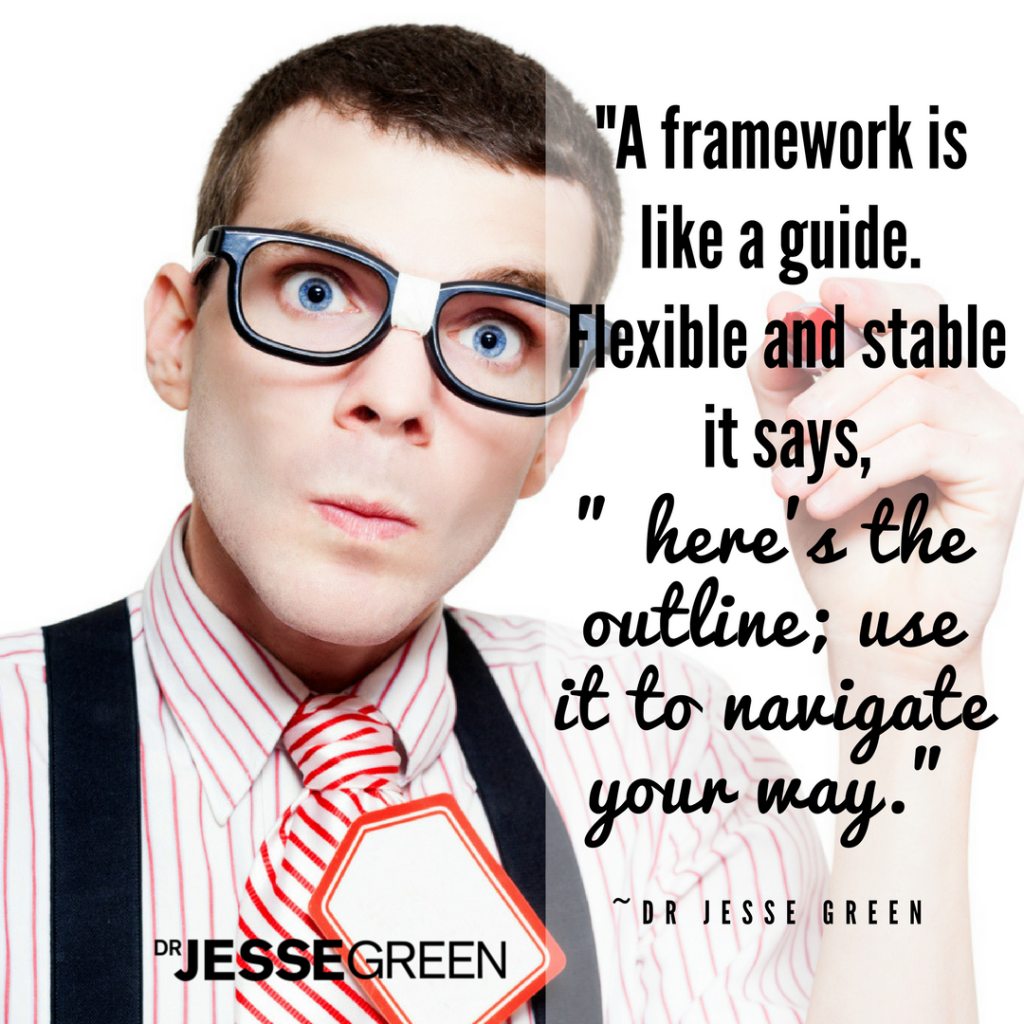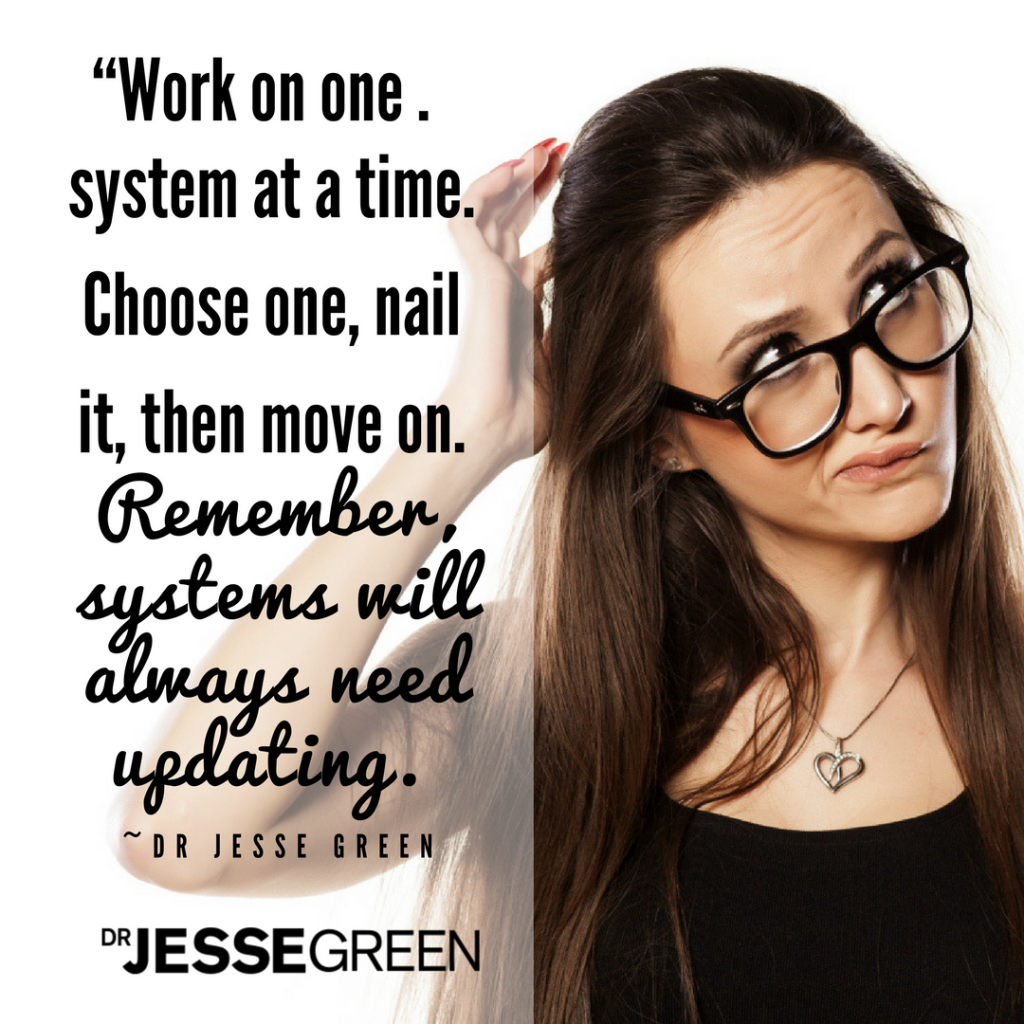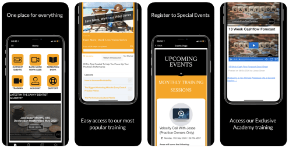While the dentist in me loves perfection in patient care, the entrepreneur in me gets a kick from creating business systems for our practice.
I love this stuff because it creates order and structure.
My opinion? Order precedes forward movement.
Order is achieved by bringing structure to the business. It follows that structure comes through the development of frameworks and processes that support the business to grow.
I’m not talking about business systems for the sake of systems, like the kind you hear about in corporate behemoths. You know, the ones that create layers of overbearing bureaucracy.
No, the kind of systems for dentists I’m referring to are the ones that make sense and work.
Developed and implemented by the people that use them, systems – composed of frameworks and processes – create freedom.
Ironically, systems don’t constrain business.
Instead, it’s the discipline and consistency created by systems that makes life easier. This is true for people who use the systems – and the business they support.
They also lead to the creation of value, as systems become measurable, tangible assets.
How Systems Work
But it’s vital to remember there’s no one size fits all, so let’s look at how systems can work for dental practice owners.
Tailor the system to suit your dental practice
When Ray Kroc franchised McDonald’s, he knew systems would be the making of the business model.
Although the Golden Arches’ level of systemisation and sameness is just fine for burger and fries’ production, it’s not necessary – or appropriate – for a dental practice.
With people’s health and wellbeing our primary concern, the nuances of individualised patient care require more than just systems.
In addition to a robust formula for treatment delivery, a healthy dose of emotional intelligence is also required to achieve a beautiful balance in patient care.
Achieving this balance is no easy feat, but when it works well, you witness the way a dental practice shifts gears and starts to rock.
The way to strike the balance is tailoring the system to suit the business’ needs.
This means neither under, nor overdoing, the system.
When I started putting this into practice in my own business, I worked out a simple formula.
Task-based processes need a standard operating procedure – or SOP.
Activities requiring ‘personality’ could be documented using a framework.
Need to know more?
No problem. Let’s explore these system ideas further.
Understanding SOPs
A standard operating procedure functions like a checklist. You could also think of SOPs as the ‘habits’ that make your business work.
Outlining each step for getting a job done, an SOP provides a task description and the relevance of the task. It also clarifies who has responsibility for the task.
When you think of SOPs, tasks like ensuring lab work leaves the practice correctly, instrument sterilisation and treatment room set up.
For these jobs, there’s one right way of doing things. Documenting it, means there is greater consistency and less confusion (as well as fewer arguments about who’s way is the right way).
Is it hard to prepare SOPs?
Well, it doesn’t have to be.
In dental practice, we work on the premise of creating ‘speedy’ SOPs. You can download this template to get you started.
With the goal being to write up the steps of a task in three minutes or less, this approach helps remove the overwhelm associated with documentation.
Naturally, there’s a testing and review process that follows.
What you’ll find is however, this review flows more easily once the initial SOP is created; especially when the job owner writes the SOP.
Formulating frameworks
Different from an SOP, a framework is suitable for any task involving human interaction.
Think of new patient communications, the complaint handling conversation or request for a referral.
A framework is like a guide.
Unlike an SOP, it doesn’t state “this is exactly what you do”. Instead, it says, ‘here’s the outline; use it to navigate your way.”
Flexible and stable, a framework is a platform from which your team can tailor their approach, according to what’s in front of them.
And while a framework might take team members a little time and practice to get used to, in the long run, I feel frameworks are infinitely superior to rigid scripts that can tie a person down.
Putting systems for dentists in place
When implementing a new system for dentists, there are a few things to keep in mind:
#1 Work on one system at a time.
Choose one, nail it, then move on to the next one.
#2 Have a plan.
Use your existing system (even if that system isn’t formal) as the start point for deciding what your system needs. Develop your plan from that, including any obstacles you’ll need to overcome.
#3 Implement.
This is about getting it done, so work to the mantra ‘prolific beats perfect’. Allow four to six weeks to integrate any new system.
#4 Have a positive feedback loop.
To keep your team engaged, give positive feedback on a job well done. Make it fun and celebrate wins.
#5 Report back regularly.
Use your weekly staff meeting to keep the team posted on progress on system implementation. This is especially important if they’re contributing to development of SOPs and frameworks.
#6 Test, adjust, iterate.
Take time to test new systems and adjust the approach accordingly. Once in place, systems for dentists will always need updating. An iterative process, improvements to systems will be ongoing.
A final word…
So there it is. A quick and simple wrap up on business systems for dentists.
Developing practice systems is a wonderful vehicle for creating ownership in your team.
It’s one of the best ways to create value in your dental business – outside of yourself.
And, it’s the fastest road to freeing you up to focus on more ways you can grow and scale your dental practice.
Need more tips now? Then grab this download: my Speedy SOP Template and these two SOP and framework samples.
Looking to supercharge your 2018? Why not join me and other dentists who are growing and scaling their practices at my next event, Masterplan 2018: Preparing to Win in Brisbane on 23-24 November 2017. We’d love to see you there.






